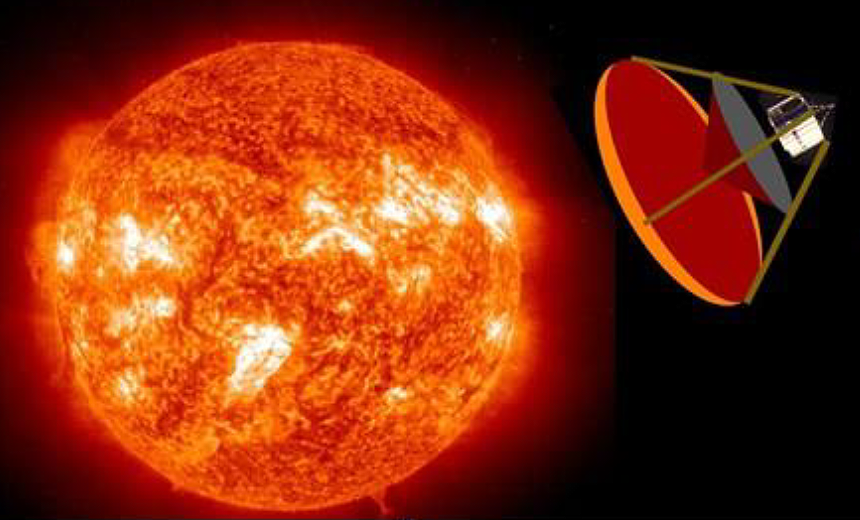Doug Willard
NASA Kennedy Space Center
In 2018 the Parker Solar Probe launched, planning to approach the Sun to within 8.5 solar radii of its surface. This is seven times closer than any previous mission, allowing first-time particle, radiation, and magnetic field measurements of the Sun’s corona. The Parker Solar Probe utilizes a solar shield comprising a lightly-coated carbon composite layer on top of four inches of carbon foam. However, the temperature limits of the shield restrict the closest approach distance.
Getting even closer to the Sun would grant further data to improve heliophysics models, while enabling study of the physics within the transition zone. At present, one of the outstanding solar system mysteries is understanding the heating mechanism within this transition zone where the 6000 K photosphere (the Sun’s primary surface) heats the corona to several million degrees is not understood. Given the transition zone’s proximity to just above the surface of the Sun’s photosphere, it is an incredibly high-radiation environment.
The goal of our Phase 1 NIAC study was to determine how near a spacecraft might come the Sun using a novel, very high-reflectivity coating. Using this material to cover a thin solar shield and including a secondary silvered reflective cone between the shield and the spacecraft (to reflect away infrared radiation from the shield), we predict that distances as close as one solar radii from the Sun’s surface can be achieved—an eight times improvement over the Parker Solar Probe.
We currently have co-funding to demonstrate that our new coating can allow a coated tank to reach cryogenic temperatures at earth distance from the Sun. This funds allow for continued coating development for our proposed Phase 2 NIAC to consider only coating issues relevant to being near the Sun. Specifically the optical and mechanical issues related to high temperature long-wave reflectors will be an area of study in our Phase 2 effort.
In Phase 2, we would compare these two materials, both theoretically and experimentally, to determine which is preferable for close Sun approach. We have models developed under our prior, cryogenic selective surface NIACs to use as a theoretical baseline. Experimentally, we considered using a high intensity solar simulator to test samples, but have discovered that the infrared emission from these simulators is much higher than that of the sun. So instead, we propose to use the sun itself as a high irradiance source (taking into account the filtering of the Earth’s atmosphere). A tracking reflective telescope would focus sunlight, collected over a large area, onto a small sample of material. Measuring the resulting temperature would provide insight into the performance of these materials.
Another Phase 2 task would add fidelity to the conceptual spacecraft design, with the input of a thermal analyst from Glenn Research Center and a structural engineer from Kennedy Space Center. Optimization and comparison of design solutions will proceed in a cooperative fashion. The design of components such as support struts must consider radiative issues to allow heat emission, yet operate under a very large thermal gradient. In addition, the secondary shield, which reflects long wave infrared away from the payload, has both optical and mechanical issues in its design that must be jointly addressed.
We are currently seeking a heliophysics member for our team who can help provide guidance and direction on issues important to that science community. In addition, JPL has stated that future interstellar missions may require a slingshot maneuver around the Sun. Analysis shows that this future vehicle would need to approach the Sun to within 3 solar radii, and JPL believes that using our new coating may be the only feasible method to achieve this.
2019 Phase I, II, and III Selections































